
On April 30, 1992, photojournalist Yael Swerdlow was working as a freelance photographer for The Los Angeles Times when horrifying violence erupted throughout the city, ultimately resulting in over 60 dead and over 2,000 injured. On Crenshaw Boulevard, Swerdlow captured one of the most iconic images of what came to be known as the LA Riots, also known as the 1992 LA uprising or civil unrest, when she captured a raw photograph of an angry six-year-old Reggie Gardner in the backseat of his uncle’s car. “It’s a symbol of some of the hopelessness,” she told CBS news in 1998, “and that if you can’t change a six-year-old kid, you’ve lost the battle. You’ve lost it.”
Three days later, on May 3, 1992 the legendary Rev. Cecil “Chip” Murray offered a resounding Sunday sermon at the then-120-year-old First African Methodist Episcopal Church (FAME) on Harvard Boulevard. Days earlier, many local Black leaders had gathered at FAME to discuss their response to the shocking acquittal verdict of four police officers charged with using excessive force against Rodney King, when fires and violence erupted throughout Los Angeles.
As part of his sermon, Murray said, “The bad shepherd who wears the badge, the bad shepherd who says it’s an operation, the bad shepherd who gives a blanket of approval, ‘I want you to go out to the streets, and I want you to love all of the sheep.’ Then, he winks in his gateway cell and says, ‘Except the Black sheep.’” (The full text of that sermon may be found at the Murray Archive at the USC Center for Religion and Civic Culture.)
Thirty years ago, Mike Woo was serving as the first Asian-American member of the Los Angeles City Council. Many Korean-American leaders and activists recall the violence of 1992 as “Saigu,” or “4-2-9,” the day the upheaval began. Over the years, LA’s Korean community has hosted events commemorating the Saigu anniversary, often partnering with local elected officials as a symbol of community healing and rebirth. This year, the Korean American Coalition planned two major Saigu 30th anniversary commemorative events, according to executive director Eunice Song. “The community has come together before to commemorate, but this is the 30th anniversary, which is a huge milestone,” she told the Journal. “Our event brings together three generations of Korean Americans in one space to reflect, educate and empower our community.”
As Jonathan Jackson, son of Rev. Jesse Jackson, told the Journal, “During the LA Riots, I witnessed the best and the worst of humanity.” For Jackson, one of those most uplifting moments of the upheaval was encapsulated in Dr. Madison Richardson, the lone Black surgeon on Reginald Denny’s surgical team, who helped save Denny’s life after he was severely beaten by four Black assailants. Denny’s life-saving surgical team included three other doctors—two were white, while one was Korean.
Denny suffered 91 skull fractures; each evening, Richardson offered updates to the press about Denny’s condition, rendering the head and neck surgeon the public face of Denny’s recovery (or potential demise). But Richardson knew exactly what was at stake: “There was no way in hell he [Denny] was going to die on my watch,” Richardson told The Los Angeles Times in 2012.
In commemoration of the thirtieth anniversary of the historic civil unrest in Los Angeles, the Jewish Journal asked Angelenos of diverse backgrounds … to share memories and hard-learned lessons from those volatile days in 1992, when the City of Angels was aflame in turmoil and civil unrest.
In commemoration of the thirtieth anniversary of the historic civil unrest in Los Angeles, the Jewish Journal asked Angelenos of diverse backgrounds, such as Woo, Swerdlow, Gardner (who now is 36) and many others, including local Jewish leaders, to share memories and hard-learned lessons from those volatile days in 1992, when the City of Angels was aflame in turmoil and civil unrest. Following are some of their responses.
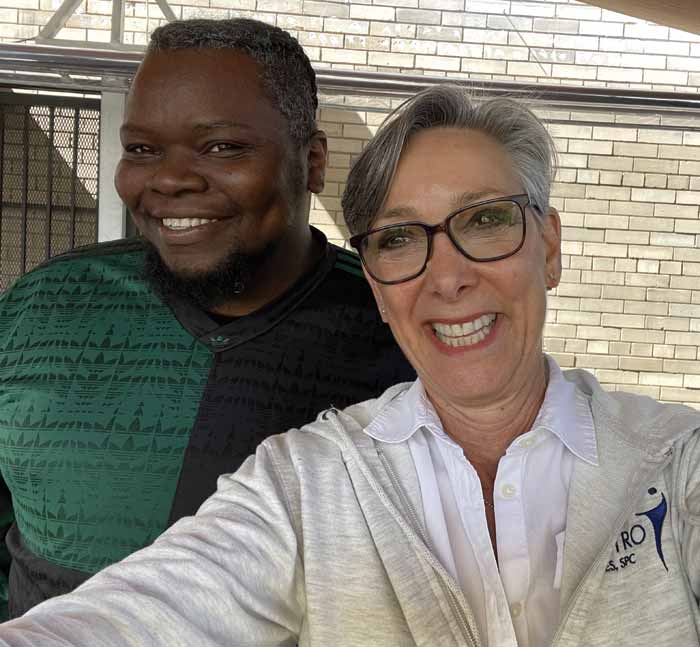
“I have always believed in the power of the photograph to move people, to shed light where darkness prevails. It’s why I became a photojournalist. On that morning, April 30, 1992, I had just responded affirmatively to my soon to be ex-husband’s petition for a divorce. Driving from my lawyer’s office in the untouched enclave of Pacific Palisades toward south Los Angeles, the city was burning. I headed south toward the smoke, finally feeling free to live my destiny without someone calling, asking when I was going to be home and telling me my beloved vocation was too dangerous.
“On Crenshaw Blvd, the Pep Boys and the El Pollo Loco were going up in flames a few doors from a video store. I joined a few of my news photographer colleagues who clicked away as the kids jumped out of the shattered window, arms full of VHS tapes. Suddenly I heard a noise coming from the street behind me. I instinctively raised my camera against that noise, buying into that well-worn false photojournalist belief that it protected me and made me invisible. Just one frame captures the photo of six-year-old Reginald (Reggie) Gardner, giving me, as Davette Demery, his 26-year-old single mother, made him apologize for, his “bad finger,” forever joining his life with mine.
“But soon after, that light that had been shined upon the systemic issues in Los Angeles and policing went dark again, left to fester, as we know, nationally.” – Yael Swerdlow
“After the LA Times did a couple follow-up stories on Reggie and his life, the issues that had moved Reggie—just shy of seven years old, but angry, and hyper aware of the perils of his life path as a young black man living in his South-Central neighborhood — led to a few short lived allegedly well-meaning changes. But soon after, that light that had been shined upon the systemic issues in Los Angeles and policing went dark again, left to fester, as we know, nationally. The bright spot is the man Reggie has become. At 36, he is kind, articulate, community-focused and an activist. He is a family man with four kids of his own that he is raising to be, in his words, “conscious, good citizens, not afraid to speak up against injustice, but carefully.” Showing his kids my photo, he says, will be an educational conversation.”
—Yael Swerdlow, CEO/Founder of Maestro Games, SPC, building resilience technology for First Responders

a katz/Shutterstock
“Reflecting on the 1992 Rodney King uprising, not much has truly changed in the Black and Brown communities — it has only gotten worse. Due to poor police training and practices, the police have no real ties, commitment or connection to the communities they patrol. Police agencies won’t allow officers to police within the communities where the officers reside because the law enforcement agencies believe the cops will show favoritism for their community members and officers won’t do their jobs properly. How can you expect policing to get better when they are not a part of the communities they patrol? I was angry when we were driving down Crenshaw [in 1992] because the police were just waving us by — directing traffic while everything was burning. They didn’t care what happened because it was not their home.
“Officers are brainwashed to behave a certain way when they have encounters with members of the community. They treat them unjustly and then tell us “there is nothing we can do.” How can we trust a system that is corrupt and unjust to the people it’s supposed to protect and serve? Plus, the world has changed — we deal with a lot more mental health issues in our communities. Police officers will say they have training for people that are having mental health issues, but they really are not sensitive to those people’s needs. These things that have happened in the last 30 years.
“I live in Bakersfield, which has a track record for excessive force and officer-involved shootings of community members. I’ve been treated unjustly by the police there. We are good citizens, and the police only see us as criminals. If there is no change in the system, it will only keep getting worse.”
—Reginald (Reggie) Gardner II, Close protection services (self-employed)

Courtesy of Yael Swerdlow
“The riots erupted at the intersection of Florence and Normandie, very close to where I lived during middle and high school. I expected protests and real anger. When I witnessed on live TV the horrific beating truck driver Reginald Denny was receiving during the early stages of the riots, I kept saying to myself, “LAPD will be here momentarily to save this man’s life.” I was wrong. LAPD officers had been ordered by the chief to stay away from where Denny was almost killed.
“Many Korean business owners lost so much in the riots, including businesses and their belief in law enforcement. Compared to the Black communities that were vandalized, few white, brown, and black-skinned Angelenos helped clean up or lend moral encouragement in the Korean American community. I know because I was there. For two plus days I helped clean up their neighborhood and returned the occasional hug or handshake from non-English speaking Koreans.
”The spirit of first-generation Koreans, though battered severely with the aftermath of the King verdict and receiving no assistance from LAPD during the riots, is still thriving today.”- Gil Garcetti
“The first-generation Korean merchants worked long and hard so that their children could live a better life. Thirty years later, we see that this focus paid off. Today their children have become teachers, scientists, doctors, lawyers, bankers, entrepreneurs, scholars, journalists and contributing citizens. The spirit of first-generation Koreans, though battered severely with the aftermath of the King verdict and receiving no assistance from LAPD during the riots, is still thriving today.”
—Gil Garcetti, Former Los Angeles District Attorney (1992 – 2000)
“On Friday May 1, 1992 — the end of the week in which the civil unrest took place — Mikhail Gorbachev spoke to a civic luncheon in downtown Los Angeles, which I attended. It took place on the top floor of the Bank of America building some 50 floors above Flower Street. From that perch, we had an unobstructed view of the city, with buildings still smoldering and smoke still billowing.
“Gorbachev was asked to take stock of what he and the rest of us could see with our own eyes. ‘What you have experienced is something that will soon be visited upon the rest of the world,’ he said. ‘Ethnic tensions, fueled by economic stresses, will produce violence far worse than this.’
“It wasn’t long before the war in former Yugoslavia erupted. Civil wars around the globe, genocide in Rwanda, and much more were right around the corner. And it seems like it has never abated. While Angelenos saw the 1992 uprising as a unique local event, the former leader of the Soviet Union saw it as the crippling legacy of economic, racial and ethnic inequality that had been allowed to fester.
“It took Mikhail Gorbachev to explain to LA’s civic leadership that unless humanity confronts hopelessness and despair, it will, in the words of the Tanach, reap the whirlwind.” —Zev Yaroslavsky
“It took Mikhail Gorbachev to explain to LA’s civic leadership that unless humanity confronts hopelessness and despair, it will, in the words of the Tanach, reap the whirlwind.”
—Zev Yaroslavsky, Former Member, Los Angeles County Board of Supervisors; Former Member, Los Angeles City Council, District Five (1975–1994)
“I saw decent people rise for justice and bad people do despicable things.” – Jonathan Jackson
“Looking back to the LA Riots that erupted on April 29, 1992, sparked by the acquittal of the Los Angeles police officers who brutally beat Rodney King, it is impossible for me, as an African-American man who was 26 back then, to not see a connection between those events and the massive protests that followed the horrific murder of George Floyd. As a native Chicagoan and the son of renowned civil and human rights activist, Rev. Jesse Jackson, Sr., I also see the thread that weaves the Rodney King beating and the Floyd murder to the lynching of 14-year-old Emmett Till in 1955. In each of these cases, the American public was exposed to searing visual images of the victimization of Black men. During the LA Riots, I witnessed the best and the worst of humanity, the best being the white man who videotaped the King beating and the Black men who saved the white truck driver in the riots. I saw decent people rise for justice and bad people do despicable things. Foremost, I learned that the rich and privileged did not fully recognize that the poor, downtrodden and abused even existed until the city was set aflame. It all underscored for me the words of my godfather, Dr. Martin Luther King, Jr., who said, “In the final analysis, a riot is the language of the unheard.”
—Jonathan Jackson, National Spokesman, The Rainbow/PUSH Coalition and Candidate for U.S. Representative, 1st Congressional District, Illinois
“A few years before the Rodney King beating, while I was making a condolence visit, aggressive police whipped out their guns and pointed them at me for the crime of walking in a white neighborhood. My own neighborhood, in fact. It was not the first time in my young life that I had been racially profiled walking in my neighborhood — probably the same neighborhood in which many of you are reading this now. If you grew up Black, Latino, Native or, like me, of mixed-heritage and just racially ambiguous enough to make some white people nervous, you were used to police behavior like this. And worse. Had those officers had a bit more adrenaline in their system, if I had had a bit more testosterone in mine, or if the grieving mother I was visiting had not pleaded on my behalf, I could have wound up shot, dead, with no questions asked. The incident was dehumanizing and I still carry the psychological scars. But I didn’t bother filing a complaint, confiding in my rabbi, even telling my mother. Why bother? Without evidence, who would believe my word against that of the police?
“So, when I saw the Rodney King video, my dominant reaction was not shock or anger. My dominant reaction was relief. At last, after years of people of color lamenting police brutality, racial containment and race-based intimidation imposed under color of law, here was the evidence. No, not just evidence, undeniable proof. The truth could not be evaded or denied. We couldn’t be accused of making it up. The world would have to take notice; those responsible would be held accountable. Now we could expect justice. Right? Today, I feel almost foolish for being so naïve, for trusting that the system, faced with graphic proof, would at last do the right thing. But justice, while certainly not unheard of, has never been a safe assumption for people of color. And it was not a safe assumption in April, 1992. There are a lot of good reasons — moral, political, practical — that I oppose riots, but among the most important is that, inevitably, riots give an excuse for people to turn away from the cause of those riots. For instance, how many of you watched with horror the footage of the 2014 Ferguson riots? And how many of you read the Justice Department report — publicly available on the DOJ’s website — detailing the horrific corruption and abuse that led to those riots? Yes, there are commissions and investigations, but memories are short, attention wanes, and habitually we fail to look beyond riots to address root causes. And, as a result, in every generation, Rodney King becomes Rampart becomes Tamir Rice becomes …”
—Eric Greene, Stanford Law School graduate; civil rights activist and leader in Jews of Color communities nationally and in Los Angeles
“Saigu (‘4-2-9’), a traumatic period in our city’s history and one of the most devastating civil disruptions in American history, changed our lives. The Korean American community found new strength and has made progress, but there is still much to be done to build bridges and heal. The Korean American Coalition is committed to continuing to build those bridges between different members of our community.”
—Eunice Hur Song, Esq., Executive Director of Korean American Coalition
“I was living in Venice, part of the Young Israel of Santa Monica community, which we renamed Young Israel of Casablanca after they asked me to be president. We rented the chapel beneath the Conservative Mishkon Tephilo, with an entrance off an alleyway. We were a small group of Modern Orthodox rebels, and we often gathered for Shabbat meals. But like a fool, while the city was under curfew, I decided to join some friends for a Friday night meal. As I walked on a desolate Main Street, the scene felt right out of Blade Runner. A sketchy looking car began following me, as I walked a little faster, mumbling to myself that breaking the curfew may have been the dumbest thing I’ve ever done. And then, like a mirage in the desert, I saw a police car. I was never happier to see cops in my life. They asked me what I was doing. I told them I was going to a Shabbat meal. They told me I shouldn’t be out, but they accompanied me as I walked the final two blocks to my friend’s place, the sketchy car a distant memory. I wished them ‘Shabbat Shalom.'”
—David Suissa, Publisher & Editor-in-Chief, Jewish Journal
“It was one of my life’s first formative experiences. I was an eleven-year-old refugee from Iran, and my adopted home of Los Angeles was on fire. My beloved public elementary school in Westwood was closed. The evening news became my teacher. I learned about race and police, about inequality and injustice. My passion to address those deep difficult issues that the Riots brought to the surface made me return home after Yale. The Riots led me to roll up my sleeves to do my part to help improve Los Angeles for everyone — as a lawyer, non-profit leader, and City Commissioner. The Riots were a week after Passover in 1992. Family members were visiting us from Iran and Israel. I will never forget as we watched in horror and asked each other how this could be happening in Los Angeles. For some, those dark weeks ended their love affair with Los Angeles. For me, they made me commit my life to repairing our beautiful but broken city.”
—Sam Yebri, Jewish community leader and candidate for Los Angeles City Council
“In 1992, I was on the Southern California Rapid Transit District board. I still remember the flames of smoke, the rioting and the violence, but also the anger and the frustration that so many people who lived in that part of Los Angeles felt. I recall being frustrated, but also deeply concerned about the level of violence and looting, and most importantly, about the number of people killed during those few days. The Koreans call that day ‘Saigu,’ and I think no matter what community you came from, there was a deep level of concern about just how angry so many people were after that verdict. Even prior to the rioting, we saw images of people getting pulled out of cars and trucks and being beaten to a pulp, and there was a deep sense that justice was not served with the decision that was made with respect to the officers who beat Rodney King. Many saw that decision as justice denied. But I’ve always said that we should choose to see the positive that came out of all that. One of the finest moments was when Eddie Olmos (actor Edward James Olmos) started sweeping the streets. The images of residents coming to assistance; the person who commandeered the truck of Reginald Denny and took him to the emergency room and saved his life; images of people protecting motorists who were being beaten. When I was on the RTD board, I remembered that after the 1965 civil disturbances, a commission was formed to look at the root causes, and one root cause was the cost of transportation. When I served on that board, I called for a 50-cent fare, much as James Hahn had done after the 1965 unrest. Since I was a young boy, I was involved in the civil rights movement. I understood the level of frustration, high unemployment, issues of poverty and police accountability that were important issues in communities like South LA. I’ve always believed that if LA’s gonna grow, it needs to grow together. It can’t grow with so much wealth juxtaposed with so much poverty. That kind of civil unrest will continue until we make investments in every part of the city, so that we’re growing more harmoniously. I choose to focus on an LA that wants to grow together, and that understands that even today, with homelessness, this level of poverty and degradation isn’t healthy for a democracy, nor for a great city.”
—Antonio Villaraigosa, Former Mayor of Los Angeles (2005-2013)
“On April 29, 1992, I was working on my master’s degree in journalism at Columbia University’s Graduate School of Journalism in New York. Although I was 3,000 miles away from Los Angeles, I was a wreck, glued to the TV screen watching the live coverage of the LA civil unrest. Not only was I furious over the injustice of four police officers being found ‘not guilty’ in the Rodney King beating trial, but I was also heartbroken by the screams and tears of Korean American store owners as they sifted through the blackened rubble of their burned-out stores. I worried for the safety of my grandparents, aunts and uncles, and cousins who lived in LA. As a budding journalist at the time, I was also upset with how the mainstream media practically ignored and erased Korean American voices from the dialogue on racism and justice.
“I moved to Los Angeles in 1995. Today, I am an award-winning author who specializes in writing narrative non-fiction books about Asian American history for children and teenagers, from Dr. Sammy Lee, the first Korean American man to win a Gold medal at the Olympics for diving in 1948, to Anna May Wong, the first Asian American female movie star. My latest young adult book, ‘From a Whisper to a Rallying Cry: The Killing of Vincent Chin and the Trial that Galvanized the Asian American Movement,’ is about the 1982 killing of Vincent Chin, which became the first federal civil rights trial for an Asian American.
“Inspired by the upcoming thirtieth anniversary of the 1992 Los Angeles uprising, I am currently working on my next young adult nonfiction book, ‘Rising from the Ashes,’ to be published in 2023 by Norton Young Readers/W.W. Norton & Co. This book will explore the 1992 Los Angeles civil unrest movement, focusing on the destruction and rebirth of LA’s historic Koreatown, taking an in-depth look at the relationship between the Korean American and Black communities during these events and since. It is my love letter of hope and solidarity between our communities because I believe we must fight not just for ourselves, but for each other, to defeat racism.”
—Paula Yoo, Writer
“We don’t always know we are in a historic moment until the moment has passed and we’re looking back at history. I was a part of the 1992 “not-guilty” moment that became a movement spreading through congregations across LA. I was in the 100-plus seat choir loft of FAME Church, looking at thousands of people pouring into the sanctuary dazed, distraught, and in great disbelief. ‘Did we just witness four cops get off on beating a man nearly to death, for a traffic violation?’ A cloud of hopelessness hovered over the church that felt like ‘if a clear cut video could not get ‘us’ justice, we are doomed!’ (‘we’ being all of the nameless and unknown Rodney Kings from the black and brown community who had experienced similar brutality and worse at the hands of law enforcement).
“This was not the first uprising. LA had seen previous uprisings, but what was different would be the wave (a wave we still are experiencing) of community development, civic engagement and social justice efforts. At the helm of a great deal of this work was my Pastor and Father-in-ministry, Rev. Dr. Cecil L. ‘Chip’ Murray. He led the church and the community in centering what is now a thriving faith-based non-profit community development and civic engagement base in Los Angeles. Notably, The Center for Religion and Civic and The Cecil Murray Center were birthed out of the 1992 unrest and continue to support faith communities committed to leading in this space.”
— Rev. Dr. Najuma Smith-Pollard, Assistant Director, Public and Community Engagement USC Center for Religion and Civic Culture
“One of my most vivid memories of the 1992 unrest took place on the second day after the violence began. About 25 community leaders representing the African-American, Jewish, Latino and Asian-American communities gathered in a high-rise office building on the southern edge of downtown. We sat in a conference room and first, just talked. Emotions were running high. We talked about the frustration — particularly in the Black community — over the acquittal of police officers who had brutally beaten and tased Rodney King. Many of us expressed our solidarity, that violence should be avoided and rejected by everyone, but also tried to convey that brutal police actions were unacceptable and must be confronted by all of us.
“The video footage from the King beating had been shown on TV so many times and was so vivid that we all felt we had been eye-witnesses to that horrible event. This was, of course, years before everyone had cell phones with video cameras, so this footage was new, and to most of us, unique. You can draw a straight line from the King beating in 1991 to the killing of George Floyd by police in Minneapolis in 2020. Neither event would have become the focus of national attention and outrage if they hadn’t been video recorded by bystanders and released to the public.
“We also heard that day the concerns of the Korean-American leaders about how buildings in Koreatown were being targeted, the level of fear in that community and the sense of abandonment Korean-Americans were feeling—abandoned by the political leadership and even the police.
“You could see vast stretches of Los Angeles to the south and west. And you could see flames rising, smoke curling upward from two, three and four fires.” – Rabbi Gary Greenebaum
“As we discussed strategies of how to help quell the violence and work for change, I remember looking out the huge windows of the conference room. You could see vast stretches of Los Angeles to the south and west. And you could see flames rising, smoke curling upward from two, three and four fires. And then another.
“I wondered what it would take to turn the city around, to stop the violence, including the police violence. How much unity, how much solidarity could we produce? And for how long? It has been a difficult road forward these last 30 years. A lot of two-steps forward and one or two steps back. We have made some progress. But there is still a long way to go.”
—Rabbi Gary Greenebaum, Former Western Regional Director, American Jewish Committee, Los Angeles 1990-2006; and former President and member of Los Angeles Board of Police Commissioners 1993-1995
“When the Watts riots erupted in 1965, I was a teenager growing up in suburban LA. For a Western city that prided itself as an exception to the racially-polarized cities in other parts of the country, the black and white TV and newspaper images of violence that came out of Watts were shocking.
“Along a downtown street, there was a man with a long knife, ripping holes in storefront awnings. At a freeway onramp, I saw a pile of garbage that someone had set afire.” – Mike Woo
When the city exploded again in 1992, I was a member of the LA City Council. This time, I wanted to see the streets with my own eyes, so one afternoon I went out for a drive. Along a downtown street, there was a man with a long knife, ripping holes in storefront awnings. At a freeway onramp, I saw a pile of garbage that someone had set afire. The social framework that held the city together was dissolving again. The smoke arising from the fires set in South LA settled in like a brown and gray cloud blanketing large swaths of the LA basin — temporarily erasing political boundaries, city and district lines, and racial and economic distinctions that enable most of us to conduct our ‘business-as-usual’ lives without coming to terms with the glaring inequities that characterized Los Angeles and most American cities. Then and now.”
—Mike Woo, Former Los Angeles City Councilmember (1985-1993)
“I remember seeing the recording of Rodney King being brutalized by the LAPD. In 1991, video recorders were new technology so it was incredible and frightening to actually see what we had been trying to convince policymakers to address for decades. It was very difficult to find people either inside OR outside of government who believed police officers brutalized people out of anger or just plain racism. The belief was the individual must have done something to provoke the officer. The entire world was outraged at the brutality they now saw. So we believed with certainty the officers would be convicted. When they were acquitted there was a profound sense of collective grief that quickly turned to anger and desperation. Rioting and looting started in South LA and quickly spread to many neighborhoods around the city. People were driven by outrage, some were opportunists who took advantage of the situation and some were economically desperate — I called the violence that ensued a rainbow riot as people of every ethnic group took part. As a lifelong activist working to address the root causes of crime, addiction, and violence I felt a sense of profound sadness that the collective anger and desperation felt by so many would result in so much destruction, injuries and deaths.”
—Rep. Karen Bass (D-Los Angeles), Los Angeles Mayoral Candidate
“As we look back at the unrest that shook Los Angeles 30 years ago, I remember a moment that changed the course of my life. I remember being in San Pedro and looking north toward downtown. Smoke was rising and covering the air and I was overwhelmed by a feeling of sadness and concern. I felt the need to do something.
“It was at that moment that I decided to become a police officer and serve the community where I was born and raised. I wanted to work with communities to rebuild relationships between residents and law enforcement. I wanted to work directly on making my community safer. And I wanted to help residents with their quality of life concerns. As a Senior Lead Officer, I had the opportunity to do all those things.
“While I empathize with the anger that many felt during that time, we can never condone violence.” – Joe Buscaino
“While I empathize with the anger that many felt during that time, we can never condone violence. For me, committing to public service was the best way to contribute positively to my community, a decision that sparked a career that has led me down an amazing road these past three decades.
—Councilmember Joe Buscaino, President Pro Tempore of the Los Angeles City Council; Los Angeles Mayoral Candidate
“I was astonished at the not-guilty verdicts in the Rodney King beating trial and shaken by the unrest that followed. I was directing Bet Tzedek Legal Services and sent staff home as the streets became dangerous and police were hard to find.
“Several days later, I recall driving past burning buildings to Messiah Baptist Church to stand in solidarity with congregants and offer help. We also started a Bet Tzedek project to help devastated businesses get back on their feet. Many of these businesses were owned by Iranian Americans, and our effort led me to collaborate with the Iranian American Jewish Federation.
“At that tumultuous time, many questioned whether Los Angeles was governable. We’ve seen bridges built and alliances forged since, but this anniversary reminds us of how fragile L.A. can be —and the distance we must yet travel to become a truly united city.
—Mike Feuer, Los Angeles City Attorney; Los Angeles Mayoral Candidate
“Thirty years is a long time. But the wounds from the Los Angeles riots seem as fresh as ever as communities across our region — from Sherman Oaks to South Central — continue to grapple with significant racial disparities and institutionalized racism. In the days following the riots, I took to the Jewish Journal to share my thoughts about repairing the Westside vs. inner city divide and how the Jewish community could not afford to stand back during this crucial relationship-rebuilding phase. We saw a huge outpouring of support from our community in the aftermath of the riots. From food drives to volunteer efforts, we responded in ways this city has never seen before or since. But the long-term work of redoubling our commitment to supporting the Black and Latino neighborhoods of LA is far from over. We also have to ensure we fight against hatred in all its forms. That is why the California Legislative Jewish Caucus is responding to the extraordinary increase in antisemitism. We have come a long way since 1992 but for too many people of color and ethnic minorities, it’s not nearly enough.”
—Bob Hertzberg, California State Senate Majority Leader Emeritus; Candidate, Los Angeles County Board of Supervisors
“It’s still talked about today and many involved directly carry physical scars from the event protecting their property and community from the looters.” – Rae Jin
“Although I am aware of the ’92 experiences and the importance of the 30th anniversary, I was too young then. I’m sure it affected my parents with what was going on as they lived in Koreatown and watched the news, I am unable to contribute much to the story. However, the trauma inflicted and the tension that was present then, was experienced by older children and young adults in 1992 who are well into their mid-forties to late fifties now. It’s still talked about today and many involved directly carry physical scars from the event protecting their property and community from the looters. For many of them, it remains fresh in their minds as they lived it just yesterday.
“Like my parents, immigrants came with barely anything, and to have their brick-and-mortar store coming down in flames and looted, I can only imagine the devastation and helplessness with no help coming from America the Great they all once knew. My parents owned a store in South LA at a swap meet, and I witnessed my parents in their darkest time when their truck with all their merchandise was stolen. Not knowing the language, not knowing how to get help, and not understanding why they were targeted is my recollection of my childhood memories. I believe these events and seeing my helpless parents shaped who I am and who I wanted to become as an adult. That’s why I chose to be in the field I am currently in now.
“As the Executive Director of the YMCA located in Koreatown, understanding the events that happen, our work is to bridge gaps and move our community forward. Many will talk about the past and relive the moments, but I’m hoping many will move past that, learn from it, and take action in building the community they want to live in, not only for them but for future generations as well. For me, talking about it is one thing but contributing to programs and movements that will help shape lives and redirect paths will shape all walks of life to live, work, and support each other, especially in a really diverse community like Koreatown. There is still much work to be done and it’s my own mission that my generation or next generation will help change the outlook as we lived through and understand what our previous generations went through and ensure the 3rd generation, our kids, will not have to experience any of it.
“The Koreatown I knew 30 years ago is vastly different today. I am coming back to this community as an adult and community leader, working for a national well-known non-profit organization. Its platform to prevent, educate, and bring all walks of life together will make our grandparents proud, our parents proud, and our current and future generation will appreciate and understand when we all work together, we make all things possible.
“During my time here at my current Y, I can share that the experience of the LA Riots is very much still rooted in this community as I have witnessed, when business boarded up their stores when the protests came through Koreatown during the pandemic in light of George Floyd. It was also apparent that elected officials learned from the past by sending national guards to Koreatown just in case history repeated itself. The community responded well to that and felt supported.”
—Rae Jin, Executive Director, Anderson Munger Family YMCA
“On the night the verdicts were handed down in the trial of the LAPD officers who brutalized Rodney King, I was a Co-Director of the California Women’s Law Center and I was testifying before the Santa Monica City Council, asking them to make child care more available. As Los Angeles burned, I listened to leaders of a progressive city tell me why they couldn’t do as I asked.
“The next day, Los Angeles city leaders addressed the public and began to promise a robust response, dubbed ‘Rebuild LA.’ And I witnessed yet another injustice born of longstanding and pervasive bias: Those leading these efforts were literally all men.
“My colleagues, Sheila Kuehl, Jenifer McKenna and I gathered women together into a Women’s Coalition to offer a more diverse perspective. When we asked the members of the Coalition to name the top need and solution, there was near unanimity: child care. It became our top demand of Rebuild L.A.”
—Abby J. Leibman, President and CEO, Mazon: A Jewish Response to Hunger
“I arrived in LA from Montreal in 1992 during the completion of an interview process for selection of a new CEO for the Los Angeles Jewish Federation Council. The process was almost completed but some details of my eventual hire were not finalized. It was during the few days I was out here, looking at homes in which I might be interested in West LA close enough to 6505 Wilshire [Boulevard] to avoid what I realized was a significant commute (my commute in Montreal was about 10 minutes to the Cummings House, the location of most of the Montreal Jewish Community Institutions). As I traveled to LAX for my return flight to Montreal, I listened to the radio in the taxi that indicated that there was trouble in South LA. I have vivid memories of the Air Canada flight taking off to Montreal and looking down as clouds of dark smoke rising, which, I later learned were the beginning of the 1992 riots.”
—John Fishel, Former President and CEO (1992-2009), The Jewish Federation of Greater Los Angeles
“I am a 1.5-generation Korean American immigrant. My second half of life started when I moved to the United States from South Korea in 1983. As the LA Riots began in 1992, I was just starting my career as a young school teacher at Saint Brendan School in Hancock Park, and my job quickly morphed into helping to save the lives of 300 young children. The school was located right in the middle of a major outbreak of violence, looting and arson. Like many things, time heals everything. Thirty years later, we take this time to reflect on what happened then and what we learned. I think about where it has taken me now. My role as diversity, community outreach/engagement and public safety advocate for the Korean American community is committed to making sure history does not repeat itself. So many positive things are happening in Koreatown. Please come and visit Koreatown yourself and remember us as a successful immigrant community, and not simply by the 1992 LA Riots.”
—Janet Burt, Director of Diversity & Business Development, Lewis Brisbois Bisgaard & Smith, LLP
“In 1992, I was 11 years old, living in Plano, Texas. I remember vividly watching the events unfold on television, not fully understanding why a city would immolate itself. I equally could not understand what occurred only hours before when a jury returned a ‘not guilty’ verdict against the officers who beat Rodney King into unconsciousness.
“Thirty years later, I wonder: What have we learned? Jewish values teach us that justice must be thoroughly pursued, and our means to find justice must be equally humane as the outcome of that search. We cannot return lawlessness with lawlessness and pain with pain. We must return it with love. As President & CEO of the Jewish Federation, I know that we must endeavor to build the bridges between our Jewish community and others who have been marginalized by society so that peace and security can be had by all.”
—Rabbi Noah Farkas, President & CEO, The Jewish Federation of Greater Los Angeles
“I was watching the fires, protests and looting in utter disbelief as a college student, 50 miles from the epicenter of the LA Riots in the heart of South LA and extending to Koreatown. Back then, most of us had pagers since cell phones were too expensive for many and it was “beeping” continually from Korean-American friends whose parents owned businesses in LA and were deeply concerned.
“My dad ordered me to bring golf clubs (instead of firearms) to defend our retail center taking day/night shifts protecting our building from unscrupulousness. We witnessed drive-by cars looking to start something, some even throwing flammable objects at us. My parents, like the other shopkeepers, had a right to defend the blood, sweat and tears of building the American Dream and the government had failed us. Many young Korean Americans, like myself, decided to choose a path into political leadership to dispel the false narrative of our community as lawless shooters, and be a part of the mainstream and partner with diverse groups to find solutions.”
—Alexander C. Kim, Principal & CEO | Three Kings Public Affairs; Advisory Board Member, Korean American Coalition of Los Angeles
“What have we learned since the uprisings after the four police officers who beat Rodney King to a pulp were acquitted? It was five days that shook Los Angeles and the nation to its core. But it was an outcry of hurt and rage against the racism and injustices that the LAPD had foisted upon people of color, particularly the black community. I remember distinctly standing in my then-Mid-Wilshire back yard, hosing down the roof of my garage and home because the embers from so many fires of burning buildings were igniting nearby homes. I remember the aftermath, where rabbis and pastors gathered in dialogue to demand changes in policing and how Rev. Chip Murray of First AME Church and Rabbi Harvey Fields led us to join hands across Los Angeles to meet our neighbors and begin difficult dialogues around race and ethnicity that many of us continued through the years. While the LAPD went through some important changes in policing that have made them a better, more responsive police force, some of the issues still remain. We all saw in May 2020 the LAPD’s terrible, over militarized response to the marches in protest of the deaths of George Floyd, Breanna Taylor, Freddie Grey and the many black victims of police shootings and death. And the LA Sheriff’s Department has the same issues of embedded racism that racked the LAPD 30 years ago. Sheriff Villanueva has a history of ignoring documented deputy gangs, harassment of the families of those killed by Los Angeles County Sheriff’s Department (LASD) deputies and criminal negligence leading to deaths in the jails particularly aimed at people of color.
“Perhaps at this 30-year mark, now is an important time, after the isolation of the pandemic, to get to know our neighbors once again across the boundaries of race and ethnicity. To renew our efforts to bring people together. I know I will continue my work with LAPD leadership to become more responsive to the communities they serve. And it is time to demand the same changes of the Sheriff’s Department. Let’s not let this moment pass us by.”
—Rabbi Denise L. Eger, Founding Sr. Rabbi, Congregation Kol Ami in West Hollywood; Past President, The Central Conference of American Rabbis and Board of Rabbis
“My first trip down Wilshire Boulevard was on an RTD bus. I forget that bus line number, but I was a USC undergrad on my way to apply for a job at The Magic Pan in Beverly Hills. I was hired and so took that same bus to and from work after classes. I dropped out of USC for myriad reasons and eventually moved back to Philly. I was finishing up my senior year of studying filmmaking at Temple University the afternoon I turned on the news, then wept like an inconsolable infant as I watched military tanks roll down a desolate Wilshire Boulevard. Los Angeles has always been my second home and I knew instantly that I’d need to return ASAP to prove that we could, ‘all just get along,’ in spite of the odds.”
—Pat Branch, Novelist, Filmmaker, Stand-up comic, and Special Ed teacher for LAUSD (because Momma gotta eat)
“On the 25th Anniversary of the 1992 ‘Civil Unrest,’ I prepared on these pages a reflective analysis. I noted that a period of ‘ceremonial relationships’ would follow these events, memorializing our losses and focusing on new beginnings. However, the real political transition would be far more significant.
“That period of disruption and destruction would lead to a fundamental remaking of LA city politics. Over time, it would generate the emergence of a new ethnic leadership transition, primarily comprised of Latinos, whose growing demographic strength positioned them to be the dominant political power base within this city, replacing African Americans and Jews.
“Over these three decades, Jewish involvement has profoundly shifted from high profile public roles to the presence today of particular influential players and institutions operating on the edges, supporting initiatives in education, human services, and intergroup relations on a selective, boutique basis. This represents a fundamental Jewish communal realignment from the political to the civic and economic sectors.”
—Steven Windmueller, Ph.D., Emeritus Professor of Jewish communal studies at HUC-JIR, Los Angeles; Interim director of HUC’s Zelikow School of Jewish Nonprofit Management
“Long before the civil unrest in South Los Angeles 30 years ago, I had personal and professional relationships with leaders in the Black community. I worked closely with Rev. James Lawson Jr., Rev. Chip Murray, and Southern Christian Leadership Conference Executive Director Mark Ridley-Thomas on enhancing and sustaining and the relationships between Blacks and Jews and Koreans. When the unrest broke out I joined them and the Pastor of the Calvary Baptist Church, dispensing milk and food to many in need. That Sunday, Rev. Jesse Jackson and I and a number of clergy preached from the pulpits in South Los Angeles while ashes were still felt in our lungs and eyes. Our sermons were published in a book entitled ‘Dreams on Fire: Embers of Hope.’
“I preached then as it is true now, This is a defining moment in American history.’ Many of the needs in the Black, Korean and Latino communities are still unmet, including access to health care, safe and affordable housing, and good-paying jobs, among other needs.
“Yet I note and am hopeful about the reference to what happened 30 years ago as civil unrest rather than riots, a term loaded with racial implications that reflect adversely on the Black and Korean communities. May we move beyond words that create barriers and division to actions that bring healing and unity. May this be so.
—Rabbi Steven Jacobs, Ret. civil rights and human rights activist
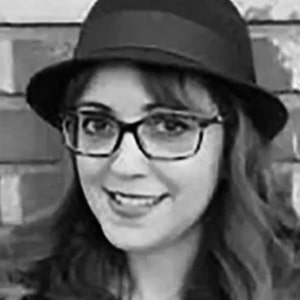









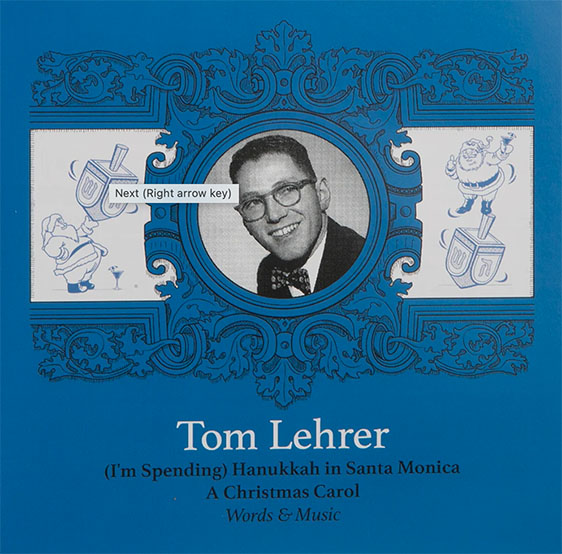
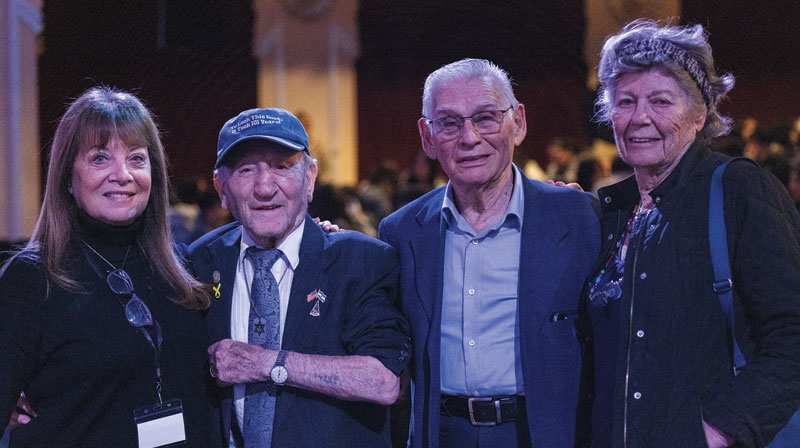

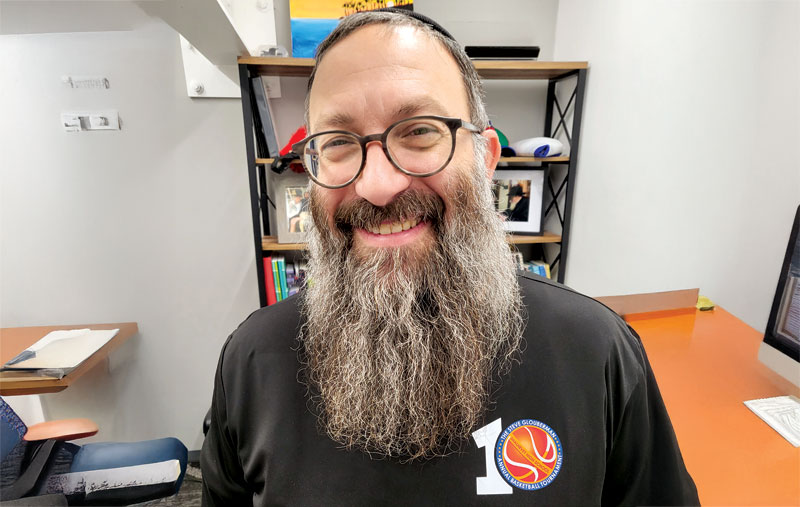


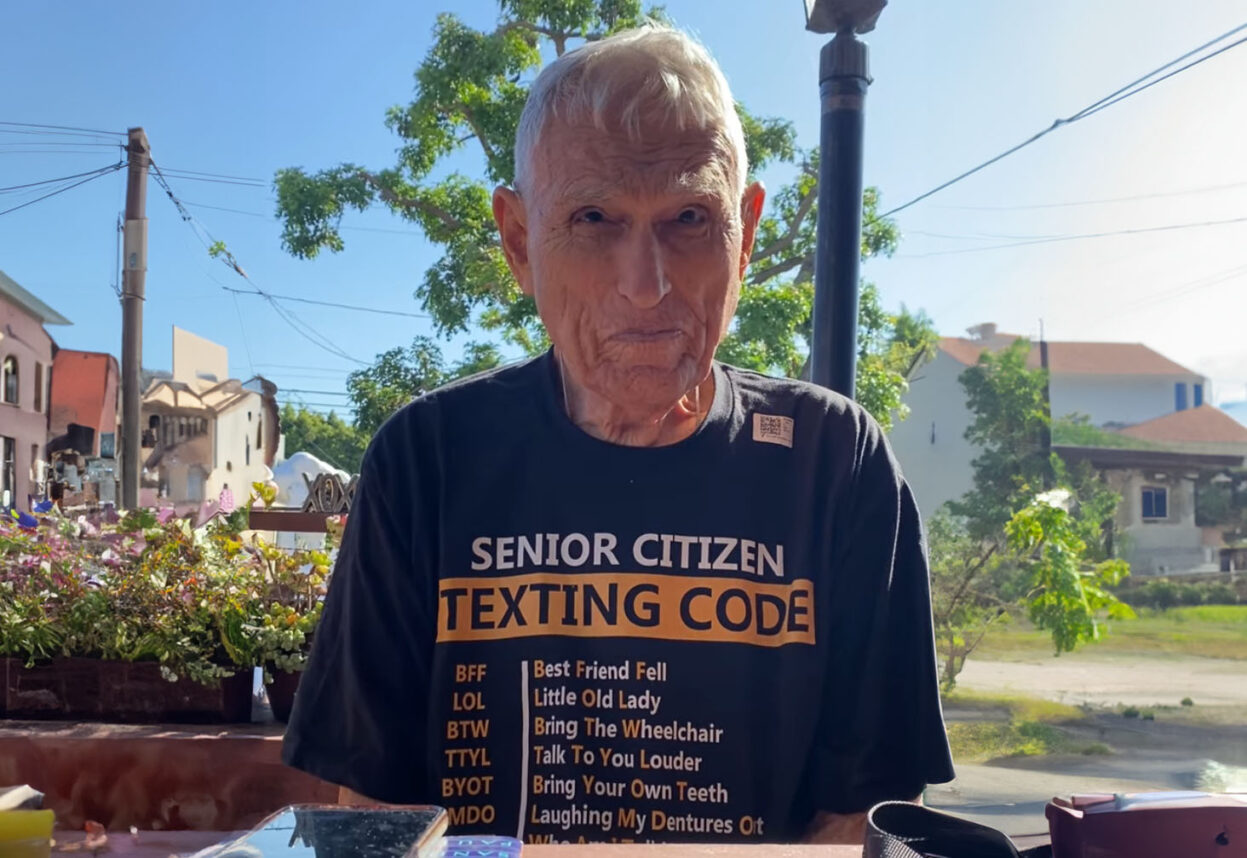
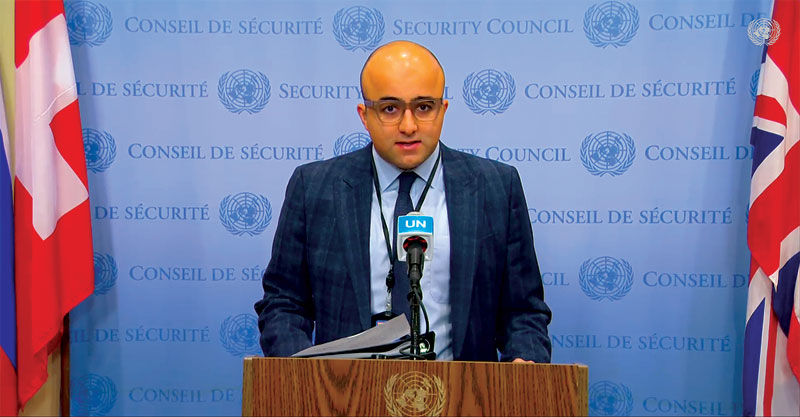




 More news and opinions than at a Shabbat dinner, right in your inbox.
More news and opinions than at a Shabbat dinner, right in your inbox.